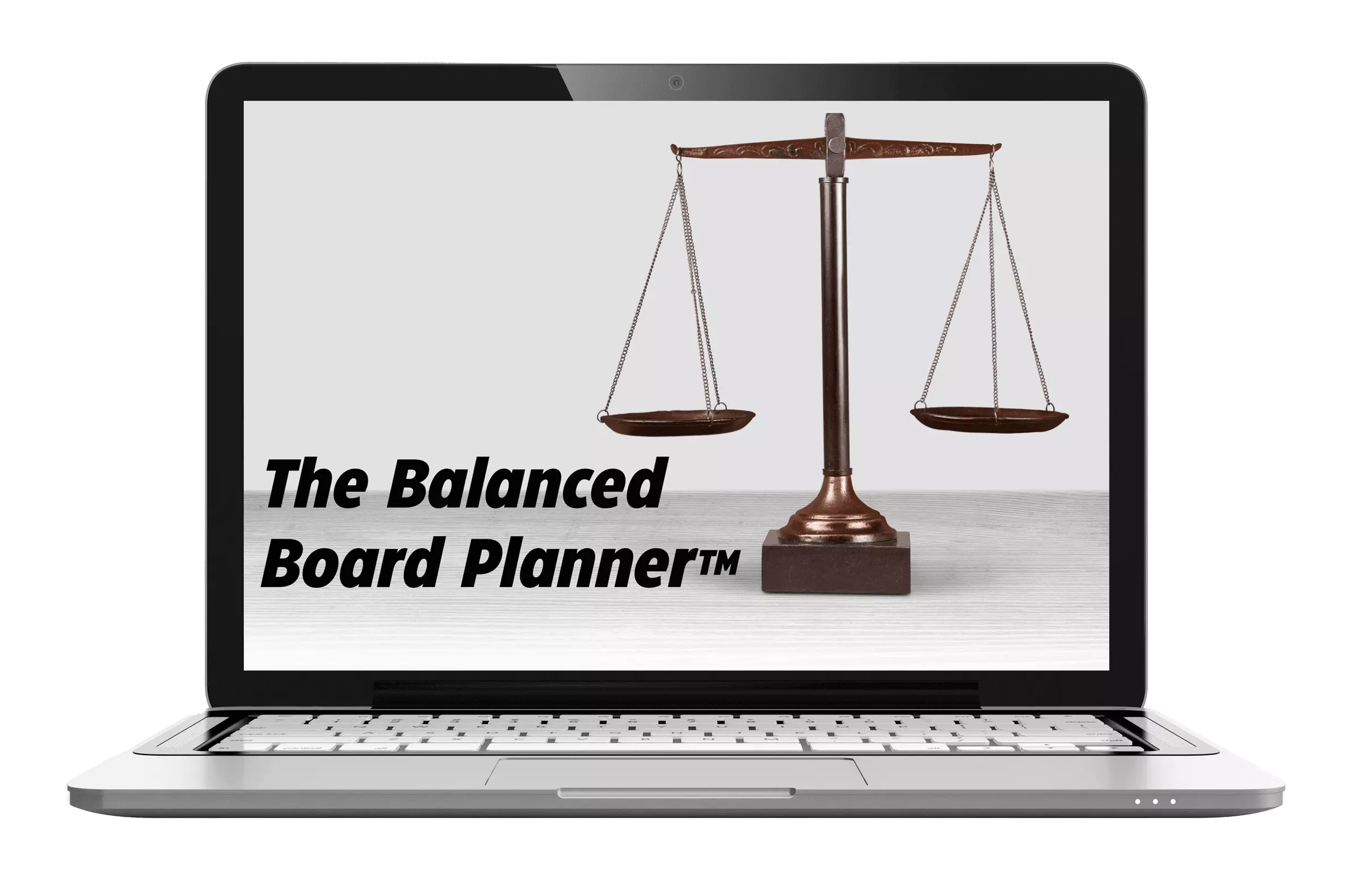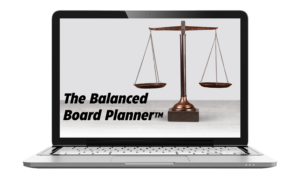Having a balanced board is extremely important to the success of your board of directors. Your board of directors needs to be able to function as a whole in order to make decisions. I want to tell you a story about an organization that had a divided board, so much so that it became “one side against the other”.
The Story
This story is about an organization that had seven board members. They had a long-term chair of the board that hand-picked all of the new board members whenever they had turnover. The board didn’t have a formal board succession process or any recruitment policies. Therefore, the board chair continued to select people who thought similarly to him. Because of this, everyone started to think the same, decisions were just rubber stamped, and the group-think continued to grow.
Eventually, that long-term chair of the board decided to step down from the chair position but he remained on the board. At the same time, a new CEO started at the organization. So, there was a new CEO and a new board chair and they realized they needed some new board members who are a bit different from the current makeup of the board. Slowly, over the years, the number of new board members who didn’t think exactly like the other board members became larger.
Now suddenly there were two cliques on the board – “the new guard” versus “the old guard”. These two groups didn’t agree with each other on a lot of issues and it caused problems on the board. There were fighting matches at board meetings, decisions were taking a long time to be made, board meetings ran long, and it was not a good situation. Because of this, the trust and respect between all the board members was extremely low and the board could not function as a whole unit.
Issues to Keep in Mind
As you can tell, there are quite a few issues within this story. Here are a few things for you to keep in mind when thinking about this story.
- The organization did not have a good succession planning process. Previously, their process was for the ex-board chair to do all of the recruiting of new board members.
- There was only one person making the recruiting decisions for the board. Therefore, everyone on the board seemed to think the same, and it led to poor board culture.
- How successful do you think this organization actually was? Do you think it could have been more successful if all of the board members didn’t think the same way? Maybe if there was a more diverse group of people with different thoughts and ideas, they could have gotten more done on the board.
- How could the board get anything done if the board members were constantly fighting with the “other side”.
What You Can Do
So what can you do so that this doesn’t happen to your organization. Or, if it is currently happening to you, this is how you can make some changes within your organization.
- Assign your board member recruitment to a committee of diverse board members. Make sure you change the makeup of this committee on a regular basis. This way you’re not always having the same board members recruiting individuals to the board.
- Develop a formal board succession planning process for your organization. Make sure you are planning for the full succession planning process. This includes coming up with competencies that you’d like represented on the board, having each person anticipate when they might leave the board, taking a look at where you may have gaps in terms of the competencies, and then coming up with a board recruitment plan. Make sure you are reviewing your succession plan on a regular basis, not just when you’re going to have turnover.
- Develop a variety of board member recruitment strategies. There are so many ways to recruit new board members! For more information on recruiting board members, check out our blog post on the “Ten Strategies to Find New Board Members”.

Download The Balanced Board Planner™
Make Sure your Board is Ready!
Download our comprehensive guide to board succession planning. This planner outlines examples of board turnover issues, explains the board contribution curve, and provides a checklist to ensure your board is always balanced.


